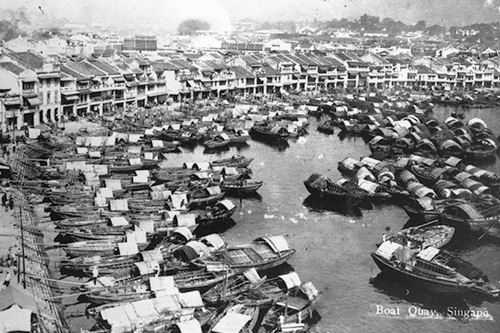
Looking at this picture of the Singapore waterfront skyline, it must be hard to imagine that this was the place where an Englishman had landed and changed the fate of a former Malay fishing village into one of the busiest and thriving British colonies, and later on into a metropolitan state by its own citizens.
The Singapore River, the former lifeblood of Singapore, has seen many changes throughout its history in the past hundred years.

A hundred years ago in the early 20th century it was bustling with trade ships, sampans and longkangs docking. Coolies laboured. Bullock carts were common. Warehouses lined the river. All this activity and poor waste disposal at the time caused the Singapore River to be a stinking cesspool not unlike the Thames at the time. However, it is an indisputable fact that without the Singapore River, there would be no bustling colony. ALL the trade and business that sustained the colony was carried out around the Singapore River.
In 1977, the enormous task of cleaning up the Singapore River (and Kallang Basin) begun. It was a costly and long-term project, and it aimed at returning the Singapore River to its former health. After 10 long years and more than S$200 million, the project was complete.

Thanks to the efforts of the people involved and the eventual rise, development and success of Singapore, the waterfront area around the Singapore River has seen a dramatic rise in development, change and continues to be here and relevant today. Truly, the Singapore River is a local example of change and continuity.
The Singapore River will continue to be here after we have all passed, and it will continue to change and be more vibrant as long as people want it to. Already in progress the government is trying to rejuvenate Singapore's waterfront and further develop the Singapore River area. The Marina Bay IR, The Helix Bridge, F1 Night Races, Gardens by the Bay etc etc are all examples of developments and changes that are or will come to the Singapore River.


